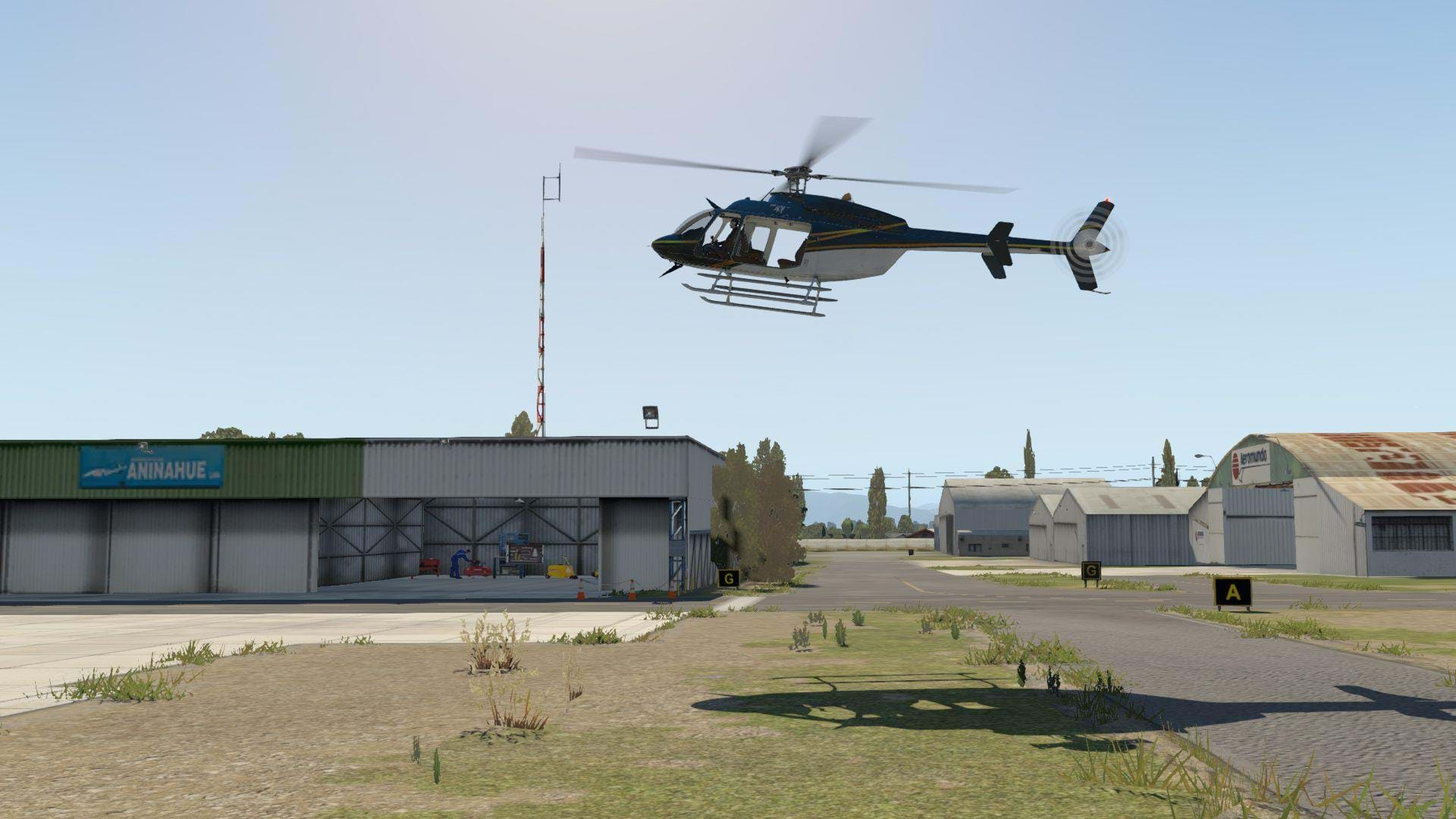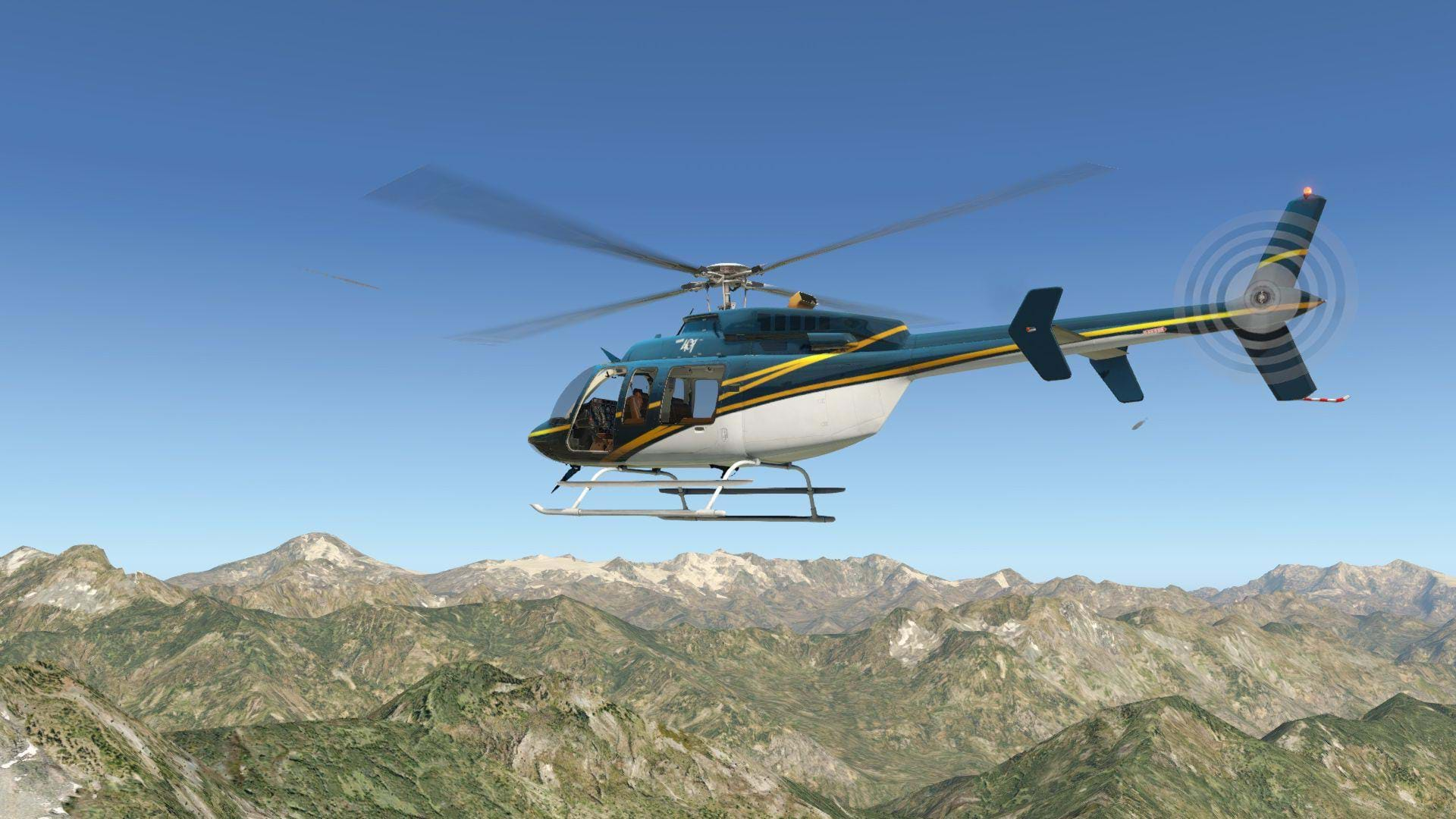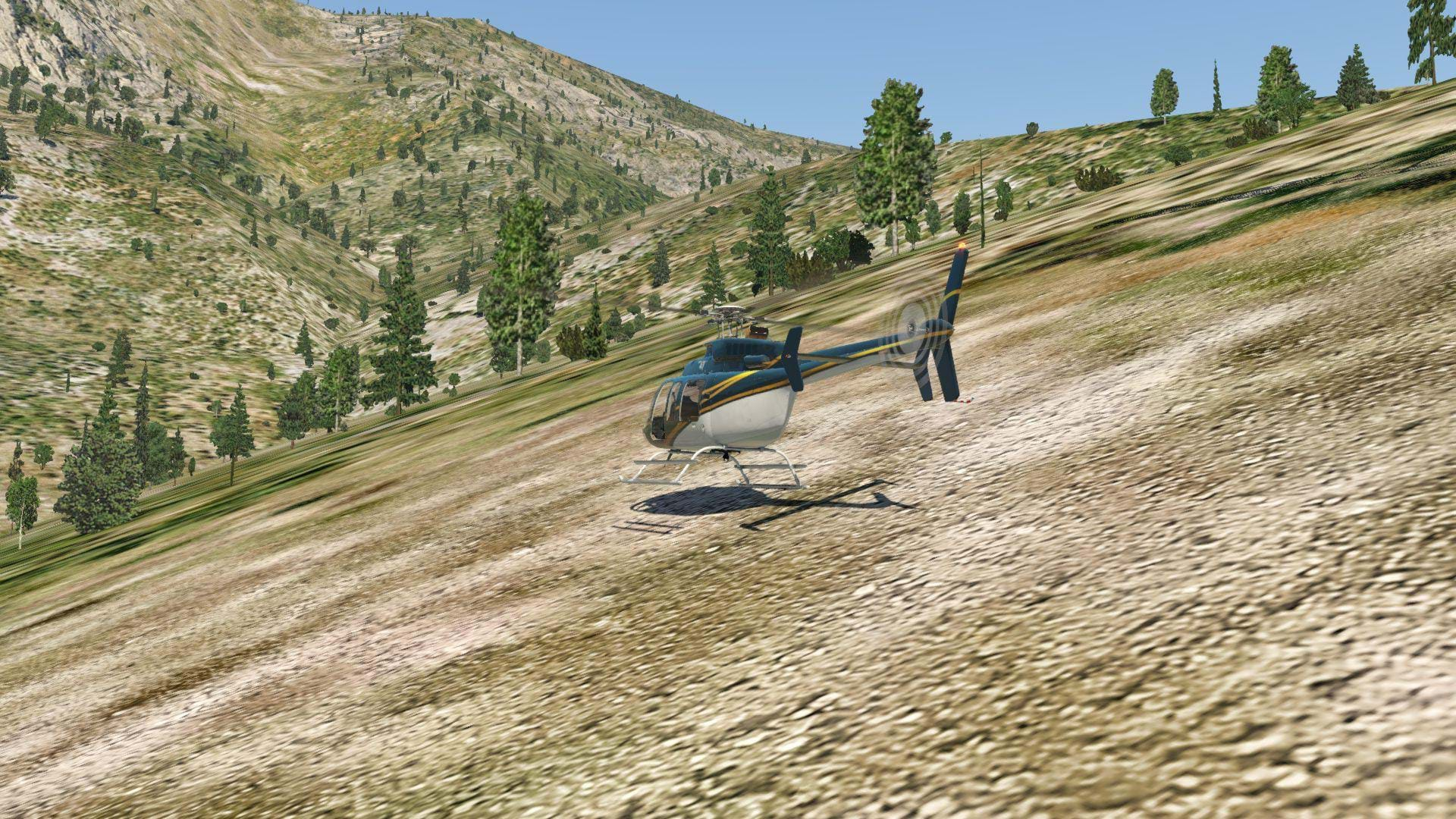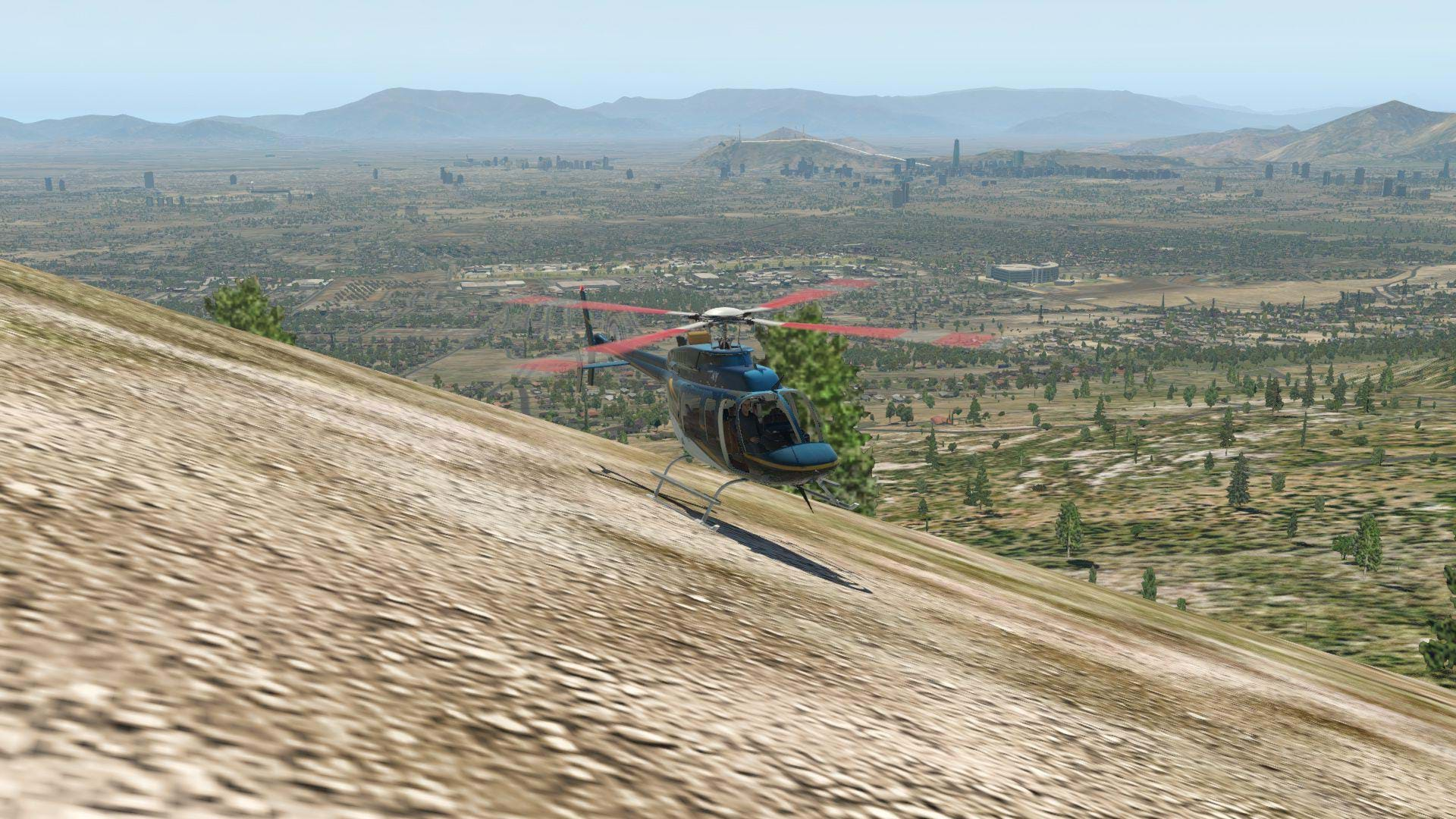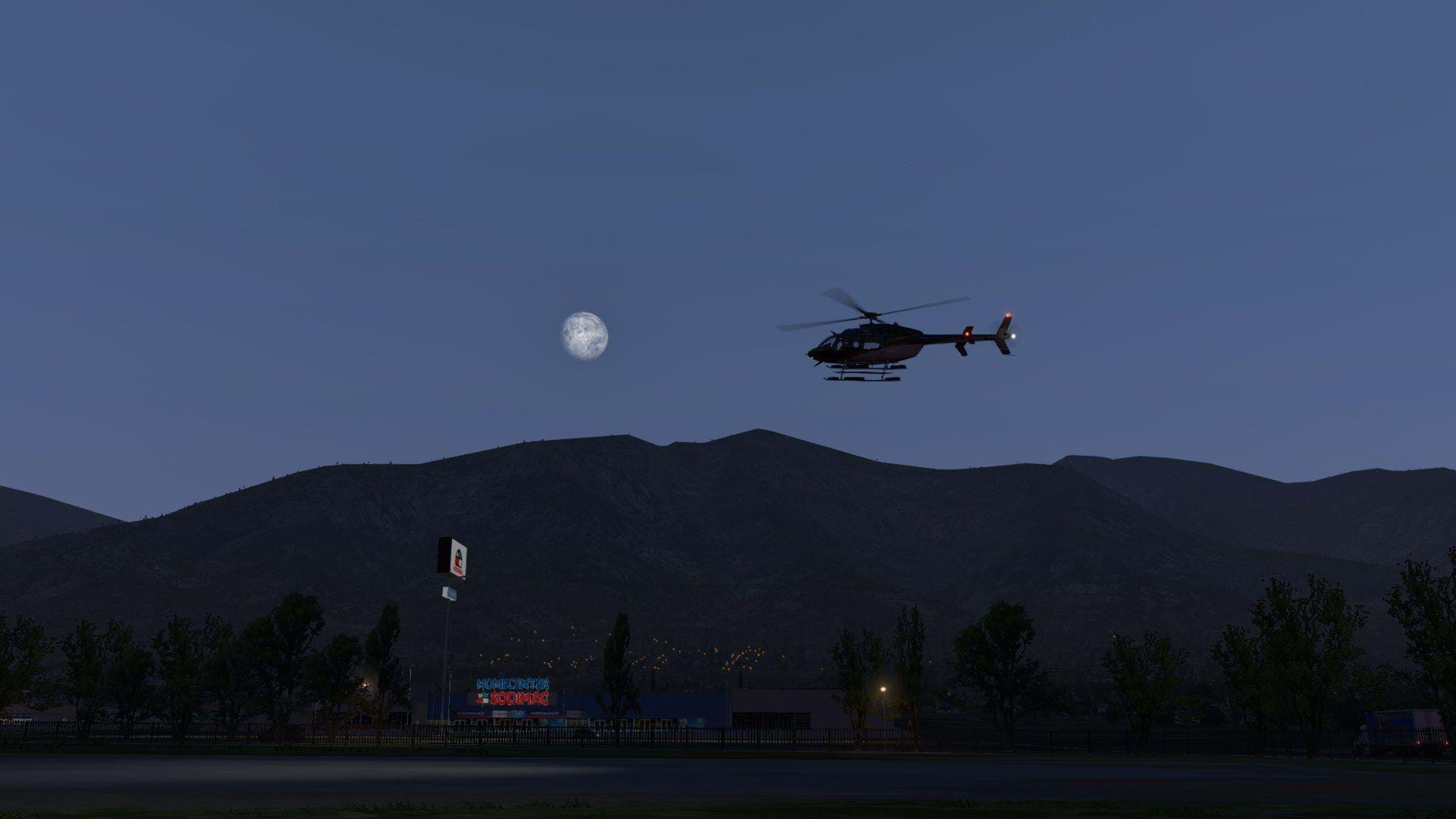Alfredo (Fred) has again shown us why Dream Foil is at the top of the rotorcraft game in X Plane 11. He’s been working overtime recently on his already fantastic Bell 407 to make many subtle but fantastic improvements.
In case you’ve missed it previously, HeliSimmer has already published several raving reviews on this fantastic aircraft. See here and here.
HeliSimmer’s own Joe Hudson spent a lot of time carefully reviewing and critiquing this already thorough flight model. Fred has stepped up and shown us again that his attention to detail and fastidious efforts make DreamFoil worth the paltry price asked for these modules.
Many of the improvements lay under the surface of the 407 and apply very subtle changes to key aspects of the flight model and systems. In some instances, only careful observers may even realize a difference.
Although, there are also many surface changes that some users will absolutely make them fall in love with this aircraft all over again. Last, but not least, for VR users, the DreamFoil 407 has also had a revamp to optimize its use within the native VR environment.
What’s Different?
To start with the subtle changes, many of these improvements will not necessarily be seen but felt through the controls. Although the DF 407 flew fantastically as it was, it only got better.
New airfoils for the main and tail rotor blades were implemented. These translate to better overall handling of the aircraft through all regimes of flight. Airfoil changes start to tweak how the blades themselves interact with the surrounding air and translate to the cyclic, collective and pedals.
Additionally, the vertical fin has been re-designed and the angle of incidence and airfoil itself re-modeled. Where users will feel this is directly in their feet. The aircraft will be more responsive to airflow over the tail and will require less pedal input in cruise flight.
The vertical fin of the 407 is designed as such that in cruise flight over 40 knots, the tail rotor should be almost completely off-loaded and require close to no input from the pilot as long as excessive cross wind conditions do not exists. Additionally, the horizontal stabilizer incidence and airfoils were corrected and will now result in the requirement of additional forward cyclic in cruise flight to more closely match how the real 407 behaves.
On helicopters, the addition of horizontal stabilizers assist with control authority in auto rotations and in providing a more useful center-of-gravity. In addition to several subtler changes (main rotor blade chord and twist, minimum and maximum pitch angles of the tail rotor and weight and balance arm changes, mast can’t angle, main rotor flapping hinge) all meld together to really enhance helicopter control-ability.
Sadly, words do a terrible job of giving credit to how significant these subtle changes are. The 407 is a soft-in-plane rotor system. What that means is in simpler terms is that each blade is attached to the hub through a series of hinges and bearings. This allows the blades to individually flap, lead and lag (a term known as hunting) and compensate for gyroscopic precession. Where this is useful to pilots is that it results in smoother flight characteristics.
Now the blades can move independent of each other and permit finer flight control input. A soft-in-plane rotor system utilizes a composite yoke (attaching mechanism from the mast to the blades) and requires less maintenance. To most users, some of these changes will be of little concern – “Does it fly gud?” Is a common question. Simply, yes it flies perfectly.
To those users that only ask that question and are only really concerned with surface changes, they are also well implemented and a lot of fun. Now users can remove all the doors (who doesn’t love flying without doors on?!).
The Basket graphics were tweaked so they don’t disappear in fog, the interaction distance for “hot spots” was removed and now we have some more smart menu choices. Within the smart menu is now the option to turn on or off some of the flight model enhancements. These include Effective translational lift (ETL), Transverse flow effect (TFE) and landing gear friction.
Just a quick sum-up for people who may be wondering what those are: ETL is an aerodynamic condition where the helicopter effectively translates (moves) into forward flight. At this point, airflow changes from vertical (through the disc) to horizontally across (and through) the disc typically around 16-24 knots.
In very general terms, this means that now the air moving through the blades provides lift for the helicopter rather than just the raw force of the engine pumping air through the disc with the blades. The condition where air that starts to move horizontally rather than vertically is an effect known as transverse flow.
Now, as that disc proceeds forward (in relation to the airframe movement), a portion of the disc is in clean air and a portion is still working on descending air. The descending (dirty) air saps performance efficiency of the blades which results in a lower angle of attack. Meanwhile, the portion of the disc in clean air has a higher angle of attack. This causes a difference in lift across the disc and results in the disc tilting.
Where the simulator pilot will feel this is during take-offs and landings. As you push forward on the cyclic to transition to forward flight, you’ll notice that between that 16-24 knots the airframe will attempt to pitch up and roll to one side.
Then, as you decelerate and start to approach to land, as the helicopter transitions through ETL and TFE, the aircraft will require increased power to arrest the descent rate.
HeliSAS
Tweaks were also made to the HeliSAS system to enable it to be more user friendly.
The controls now transition from non-stability augmented to stability augmented more smoothly without abrupt changes. Additionally, the SAS light will blink when the system is engaged which will notify the pilot that he/she is switching to an augmented mode.
This takes approximately five seconds and can be modified through the global.cfg file. During this time, avoid enabling SAS features. The PID values for vertical speed hold were improved and the altitude hold has more authority.
Additionally, HeliSAS and Frahm Dampener dynamics are disabled if a hydraulics failure is indicated.
Implementation of Native VR
This is an exciting change and one of which the author wishes he could test. Fred completely revamped the aircraft to be fully integrated into the native VR environment.
Included are hotspots for all seats, manipulator axis improvement for intuitive control movement and knob manipulators for smart controllers.
Yet, the smart menu still does not work on VR. It is still not possible to draw or interact with plugins and is awaiting further updates from Laminar.
Other changes
Garmin power is now set to ON when starting with the engines running. Also fixed is ON/OFF commands incorrectly acting as a toggle and the option to adjust gain in blade slap volume sliders has been implemented.
Also, its now possible to do a “cold, dark, start” without having to pull the MGT circuit breaker!
Where the rubber meets the road
How does it really fly? To sum up, it flies beautifully.
Low gain movement in a stabilized hover is smoother. Transitions from forward flight and to a hover are going to be a bit more challenging. Although, changes in the airfoils and lifting surfaces also results in a smoother hover and better stabilization in the low speed regime.
Fixed is the “hover lean” where the aircraft wants to sit almost precariously tail low. It hovers at a more stabilized and comfortable level attitude. Also, pedal turns are more precise and crisp. But be careful as in forward, maneuvering flight, its also now possible to cause impact to the tail boom with the tail rotor blades; a real threat in a helicopter if not flown correctly.
In summary
Experienced sim pilots and real pilots alike are going to notice significant changes immediately. These changes are certainly for the better.
The aircraft will handle more how one would expect from somebody who has experience flying the 407 or like aircraft. Again, DreamFoil has set the bar exceedingly high in terms of fidelity and accuracy. The only thing that I’ve found that can top a Dream Foil aircraft on X-Plane is another DreamFoil aircraft.
That’s not necessarily a BAD thing. To the contrary, it means that all the helicopters in my stable are very accurate and fly how I would expect.
And this new Bell 407 is right there at the top and its out now! So, if you don’t yet have the 407, now is a great time to get it; happy flying!

